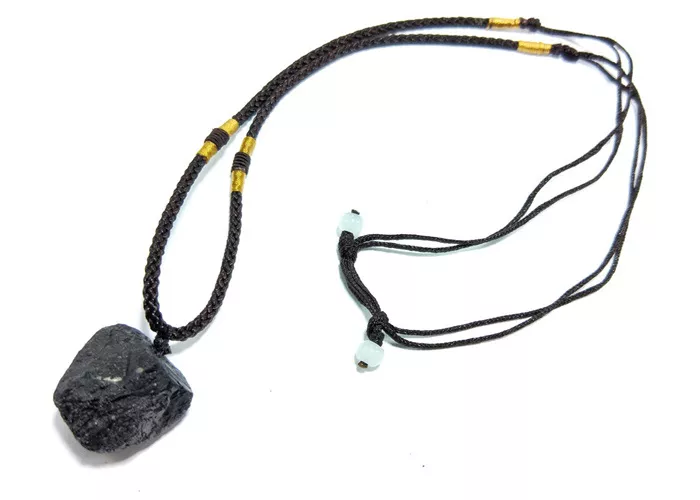Tourmaline, known for its vibrant colors and unique electrical properties, is a gemstone that has captivated people for centuries. Its allure lies in its ability to exhibit a wide spectrum of hues, ranging from deep greens and blues to vibrant pinks and reds. Despite its beauty and popularity, tourmaline may not be suitable for everyone. In this article, we will explore the reasons why certain individuals should avoid wearing tourmaline, based on factors such as skin sensitivity, lifestyle, and health conditions.
Individuals with Skin Sensitivity
One of the primary reasons why some people may not be suitable for wearing tourmaline is skin sensitivity. Gemstones, including tourmaline, can contain trace amounts of metals and other minerals that may cause allergic reactions in some individuals. While tourmaline itself is generally hypoallergenic, the metals used in jewelry settings, such as nickel or certain alloys, can irritate sensitive skin.
Metal Allergies
Metal allergies are common, particularly to nickel, which is often used in cost-effective jewelry settings. If you have a known allergy to nickel or other metals, wearing tourmaline jewelry that contains these metals can lead to skin irritation, redness, itching, or even swelling. To avoid this, opt for jewelry made from hypoallergenic metals such as gold, platinum, or titanium.
Chemical Sensitivity
In addition to metal allergies, some people may also be sensitive to the chemicals used in the jewelry-making process. These chemicals, such as those used in polishing or cleaning, can残留on the surface of the gemstone and metal, potentially causing skin irritation. Ensure that your tourmaline jewelry has been thoroughly cleaned and treated with hypoallergenic or skin-safe chemicals before wearing.
Those with Active Lifestyles
Tourmaline, while durable, is not indestructible. Its hardness on the Mohs scale (ranging from 7 to 7.5) makes it suitable for everyday wear, but it can still scratch or chip if exposed to excessive force or abrasion. Therefore, individuals with active lifestyles may not be the best candidates for wearing tourmaline jewelry.
Physical Impact
Engaging in sports, heavy lifting, or other physically demanding activities can increase the risk of your tourmaline jewelry being damaged. The constant movement and friction can cause the gemstone to loosen in its setting, leading to potential loss. Additionally, direct impacts, such as falling or being hit, can crack or chip the gemstone.
Exposure to Elements
Active lifestyles often involve exposure to various elements, such as dirt, sweat, and extreme temperatures. These factors can degrade the quality of your tourmaline jewelry over time. Dirt and sweat can build up in the settings, causing tarnishing and dulling the gemstone’s shine. Extreme temperatures can also affect the stability of the gemstone and metal, potentially leading to structural damage.
People with Certain Health Conditions
Certain health conditions can make wearing tourmaline jewelry risky or uncomfortable. Understanding these conditions and their potential interactions with tourmaline can help you make an informed decision about whether or not to wear this gemstone.
Autoimmune Disorders
Autoimmune disorders, such as lupus or rheumatoid arthritis, involve the immune system attacking healthy cells in the body. While there is no scientific evidence linking tourmaline to exacerbating these conditions, some individuals may experience flares or症状加重when exposed to certain stimuli, including gemstones. If you have an autoimmune disorder, consult your healthcare provider before wearing tourmaline or any other gemstone jewelry.
Electromagnetic Sensitivity
Tourmaline is a piezoelectric crystal, meaning it generates an electrical charge when subjected to pressure. This unique property makes it a popular choice for those interested in alternative healing practices, such as energy healing. However, individuals who are sensitive to electromagnetic fields (EMFs) may experience discomfort or adverse effects when wearing tourmaline jewelry. Symptoms can include headaches, dizziness, or nausea. If you suspect you are sensitive to EMFs, it may be best to avoid wearing tourmaline or any other piezoelectric gemstones.
Pregnancy and Hormonal Changes
Pregnancy and hormonal fluctuations can affect an individual’s sensitivity to various stimuli, including gemstones. While there is no evidence that tourmaline is harmful to pregnant women, it’s always advisable to err on the side of caution. Hormonal changes can cause skin to become more sensitive, increasing the risk of allergic reactions or skin irritation. Additionally, the increased blood volume and circulation during pregnancy can cause the body to retain more fluid, potentially leading to swelling in the fingers and wrists. This swelling can make it difficult to wear rings or bracelets comfortably.
Children and Infants
While tourmaline jewelry can be a charming accessory for children, it’s important to consider the safety risks associated with wearing gemstone jewelry at a young age.
Choking Hazard
Small gemstones and jewelry pieces can pose a choking hazard for young children and infants. If a child puts a tourmaline ring or pendant in their mouth, they could choke or aspirate the gemstone. To avoid this risk, avoid giving young children gemstone jewelry or ensure that it is securely fastened and out of their reach.
Strangulation Risk
Jewelry with chains or strings can also pose a strangulation risk, particularly for infants and toddlers. If a child becomes entangled in a necklace or bracelet, it could cause serious injury or even death. To protect your child, avoid giving them any jewelry with strings or chains until they are old enough to understand the risks and handle it safely.
Conclusion
In conclusion, while tourmaline is a beautiful and versatile gemstone, it may not be suitable for everyone. Skin sensitivity, active lifestyles, certain health conditions, and the unique needs of children and infants are all factors to consider when deciding whether or not to wear tourmaline jewelry. By understanding these potential risks and taking appropriate precautions, you can enjoy the beauty of tourmaline while minimizing the risks associated with wearing it. Always consult with healthcare professionals or jewelry experts if you have any concerns or questions about wearing tourmaline or any other gemstone.
Related topic:
- Which Finger To Wear Pink Tourmaline
- How Does Green Tourmaline Promote Cellular Health?
- Is Pink Tourmaline Rare?


